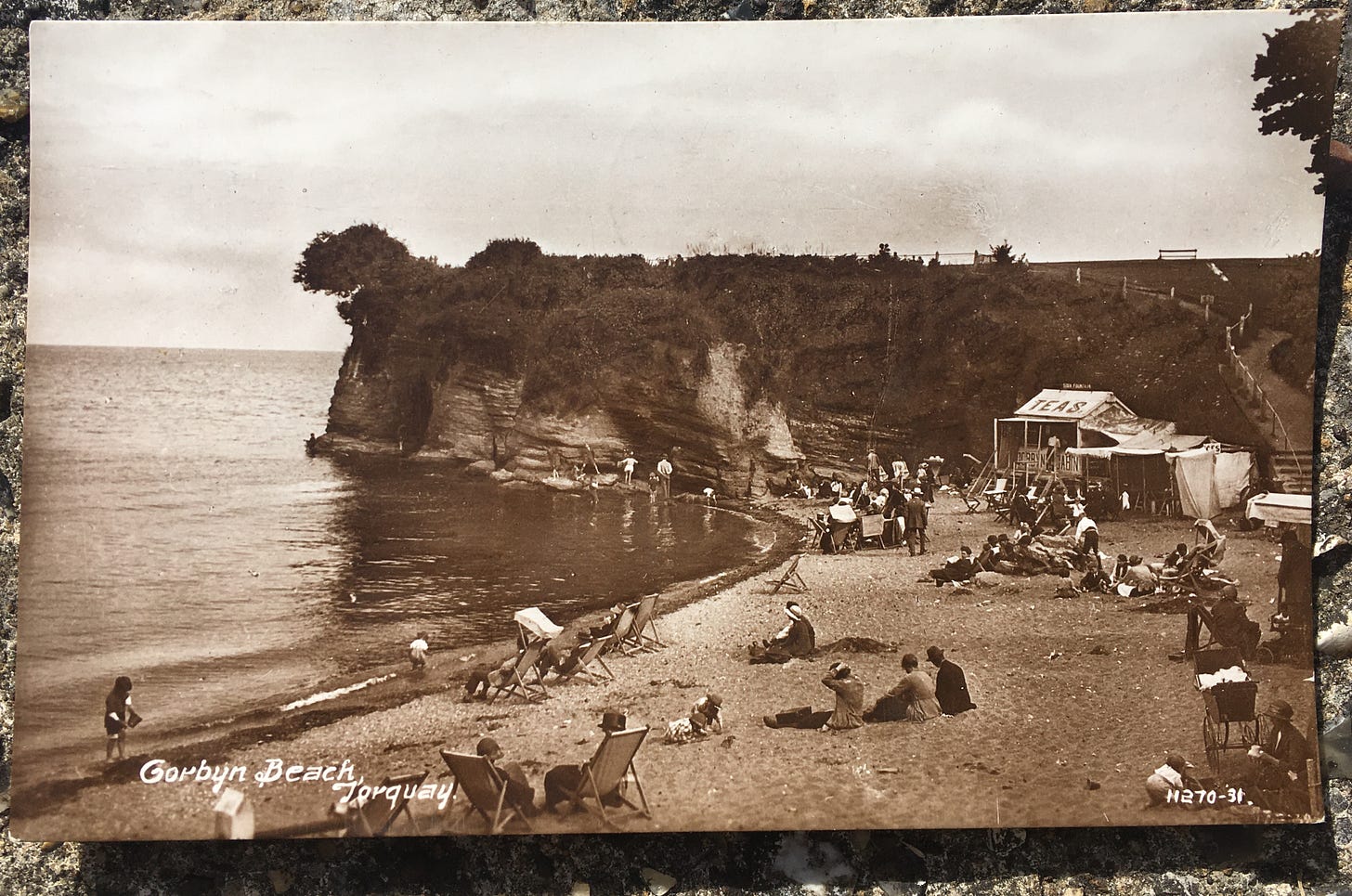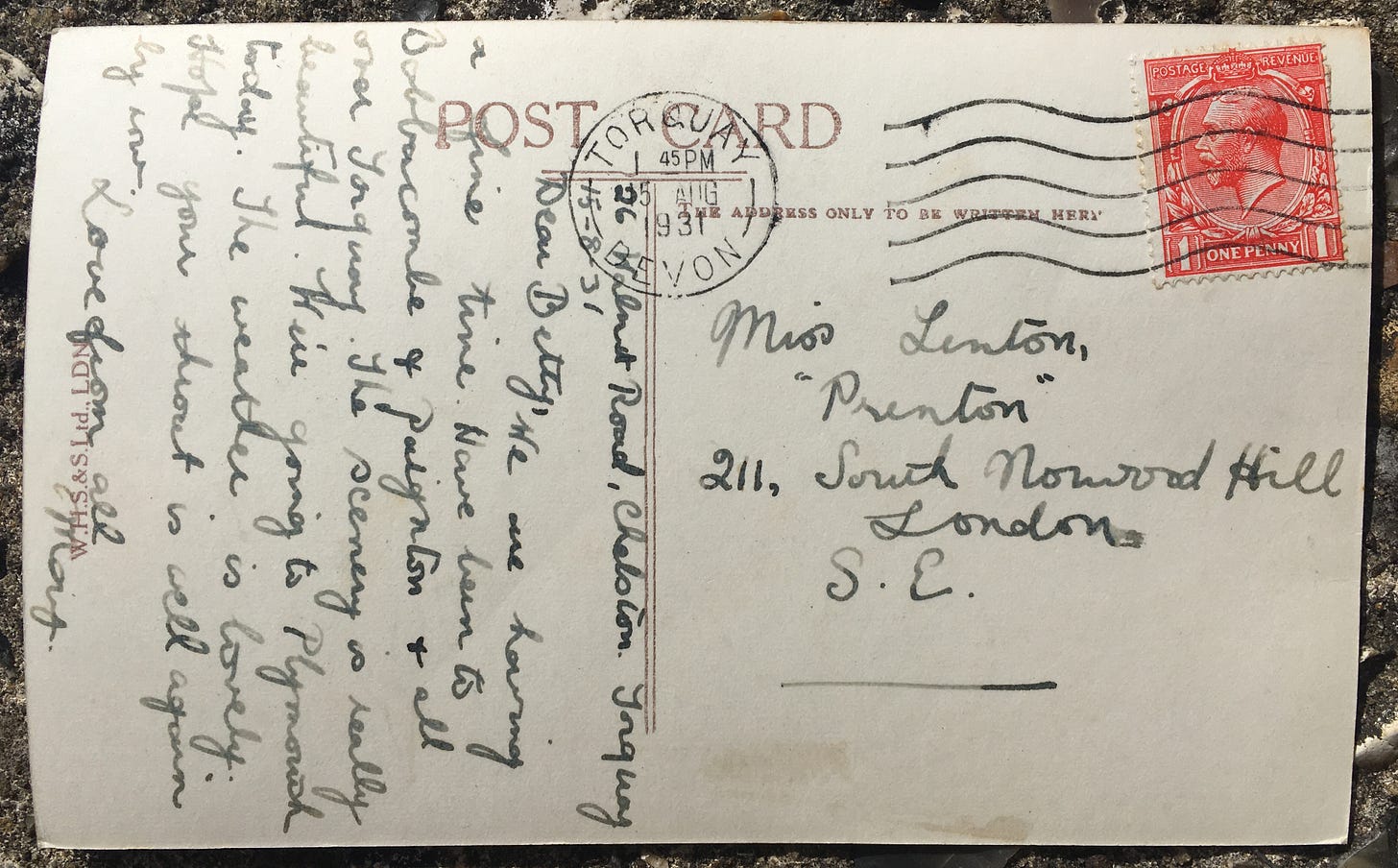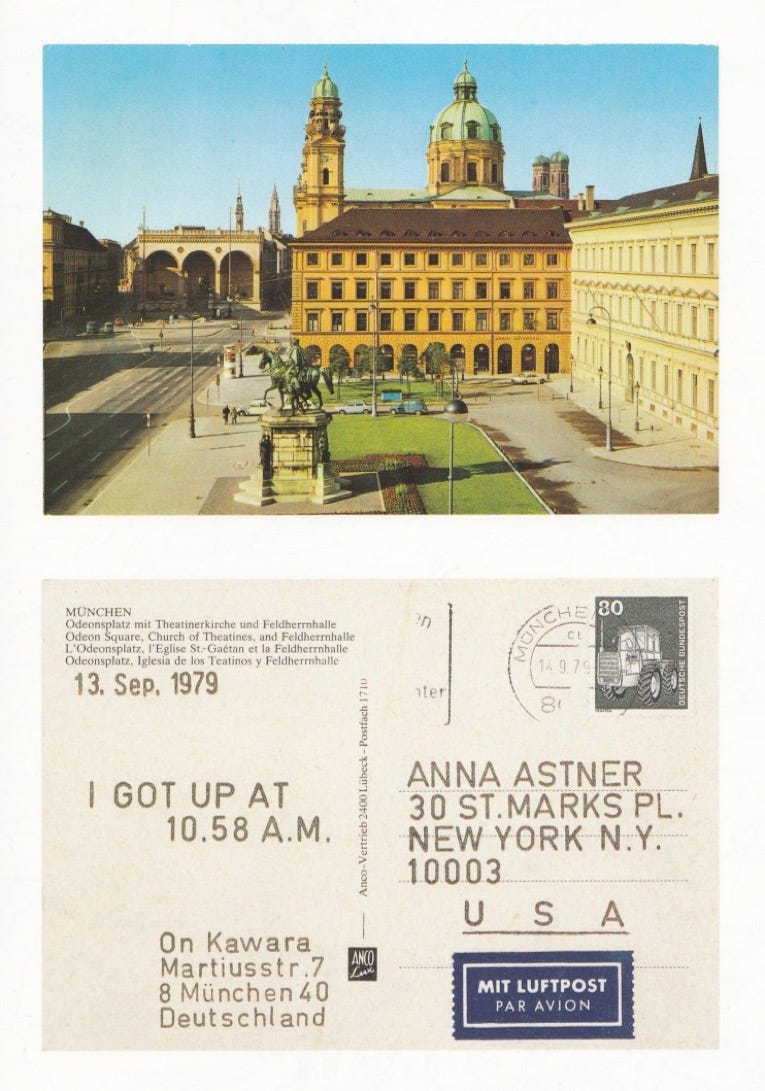Postcards
Here is a postcard written on 15th August 1931 by Mary, sent to Miss Lenton in south-east London. The front of the card is a view of the crescent of Corbyn Beach, Torquay. Women in hats in deckchairs. A ramshackle cabin selling teas. Chaps in ties. Prams.
On the reverse, Mary tells Betty:
We are having a fine time. Have been to Babbacombe & Paignton & all over Torquay. The scenery is really beautiful. We’re going to Plymouth today. The weather is lovely. Hope your throat is well again by now.
Here is another postcard, also from an August summer holiday, this time in Southsea in 1950.
Florie, Sid and David write to Mrs Putten in Desborough Avenue, High Wycombe:
Just to let you know we are having a lovely time, weather grand many thanks to you
& your mum for Davids present. Hope all are well. Crowds of people here.
These came to me in a miscellaneous pile from eBay for almost nothing.
Postcards are occasional texts: they mark a particular moment, usually a summer holiday. It would be unusual to send them all the year round. If we produced a graph of our postcard use, it would probably be a line close to zero for almost all the year, with a sudden peak for a day or two in August. The sameness of the prose and the powerful sense of rhetorical convention (the assurance of a lovely time, the weather, the places visited) is the distinguishing feature, but postcards also often possess a final clause that breaks the template, written just as space is running out, rather in the way that it’s sometimes only possible to say what you mean on the way out of the room. ‘Hope your throat is well again by now.’ ‘Crowds of people here.’
In his series ‘I Got Up’, Japanese artist On Kawara (1932-2014) sent two postcards every day to family, friends and collectors. He did this for 12 years, from 10 May 1968 to 17 September 1979, which meant about 8,000 postcards. Kawara followed a set form for the text: he used rubber stamping tools to date and address the cards, and also to print the phrase ‘I GOT UP AT’ followed by the exact time he rose. He added the address he was writing from. Kawara travelled a lot so the postcards come from all over the globe. Here is one from Mexico, written on 10 May 1968, and posted three days later.
And here is a series from Perugia in July 1973, where we learn Kawara got up each day between 6.00am and 10.27am.
Kawara is using an entirely unremarkable, touristic medium, familiar to everyone, including Florie, Sid and David, but despatching with a frequency and volume that turns the postcards into a larger, modular work, building incrementally from similar but distinct pieces. The postcards mix restraint with an accumulating richness. Kawara’s cards are both impersonal (the stamp, the lack of handwriting, the form tightly followed) and deeply individual (here is the exact time he got up!). They become a series of coordinates of Kawara’s locations, like an analogue tracking device in paper and pen, as though we have followed Mary from Corbyn Beach, Torquay in 1931 to wherever she goes for the next 12 years. They are a serial autobiography, or a version of it, with life-writing distilled down to just location and time of rising. They are also a statement of artistic determination, a commitment to seeing a work through no matter what. The project only ended when Kawara had his briefcase containing the date and address stamps stolen on 18th September 1979 in Munich. The effect of this chance event is to lend a poignancy to what turned out to be the final postcard of 8,000:
:








Another example of the mapping of Kawara's everydayness is in the work: ‘I Went, I Met, I Read, Journal, 1969’ (1992). Spread across four volumes, Kawara recorded specific aspects of each day in 1969; of his walking route, the newspaper clippings he read, and the list of people he met. What is particularly interesting in this work is how the coordinates (and their meticulous documentation) of where he went, who he met, and what he read, are interwoven into a fascinating picture (or, perhaps, a postcard) of 𝘢 𝘥𝘢𝘺.
http://artistsbooks.info/AB_Kawara%20On_I%20went%20I%20met%20I%20read.html
To add to your postcard collection: “James Jennifer Georgina” (2010) designed by Irma Boom http://books-on-books.com/2022/01/16/books-on-books-collection-irma-boom/
Another take on ephemera, intentionality, art and life.